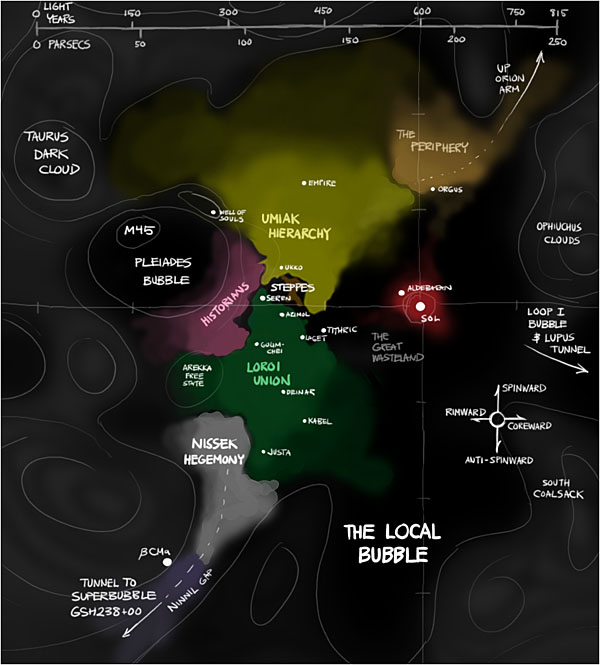The signal itself would dissipate too much to ever really be able to discern the repeating content.DevilDalek wrote: Heh, heh, well how about if it was repeated five days a week for several years? on regular timeslots like the Mickey Mouse Club was? admittedly the content changes for each one so the only thing you would get that would be consistent would be the Mickey Mouse Theme..
Let's use the one minute intro of Captain Planet and the Planeteers as an example. That used to air at 5 PM local time back in the 90's for me as a kid. The intro weighs in at 2.8 Megabytes worth of digital data, after more than a decade of compression, Youtube quality, etc. So let's say that the original analogue and uncompressed data stream was 28 megabytes worth of data. Let's also assume that the signal power is sufficient for the Loroi to clearly hear it above the background radiation. Signal dissipation is still a thing though. If they can get one tenth of a percent of the original signal, I'd consider that plenty impressive.
So, a bit of math, that works out to:
28 MB = 29,360,128 Bytes
29360128 * 0.001 (1/10th of 1%) = 29360.128 = 28.672 Kilobytes.
Now, let's assume that every time the show is broadcast the Loroi manage to perfectly capture the next 28.672 kilobytes of the introduction sequentially so as not to needlessly duplicate results...
Total Signal / Amount Captured = Time to get the full picture
29360128 / 29360.128 = 1000
They'd need to listen in 1000 times successfully to get the whole intro. There were six seasons and 113 episodes. Assuming the intro never changed, the timeslots remained consistent, the positioning of the Earth and orbital precession remained consistent, there were no occluding events, no interfering gas and dust clouds, they reran the entire show 10 times, and perfectly captured every last byte while knowing exactly what to look for and when to look for it and were listening in the one minute window of opportunity to get the data they needed, they might be able to pick the signal out from amongst the noise and be able to piece it together.
And that's assuming that signal strength is itself no object. The signal strength necessary to reach 200 light years clearly for this to even work would probably strip off the ozone layer and require more juice than the entire continental united states produces in a year.
Even when the deck is stacked and handwaved to favour some kind of signal getting through, the odds of it reaching that far are... astronomical, appropriately enough. There is no possibility of an Omicronian situation. The best we, or anyone else for that matter, can probably hope for is a WoW! type signal that turns out to be genuine, predictable, constant and repeating, instead of a once off mystery like we got.
That being said, the Wow! signal did come from about the right distance... who knows, maybe Humans are the ones that got the hint about someone actually being out there long ago and simply missed it.



